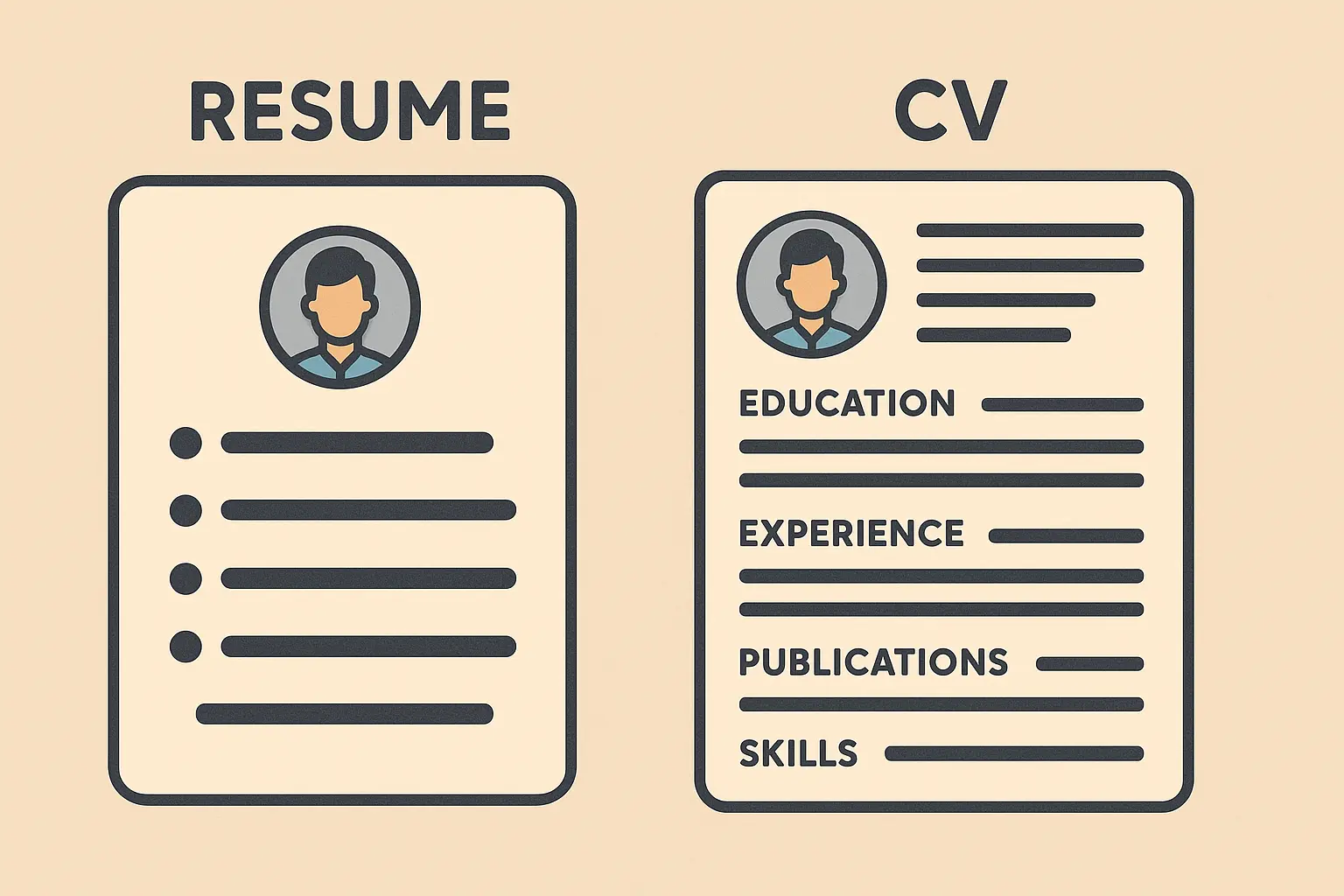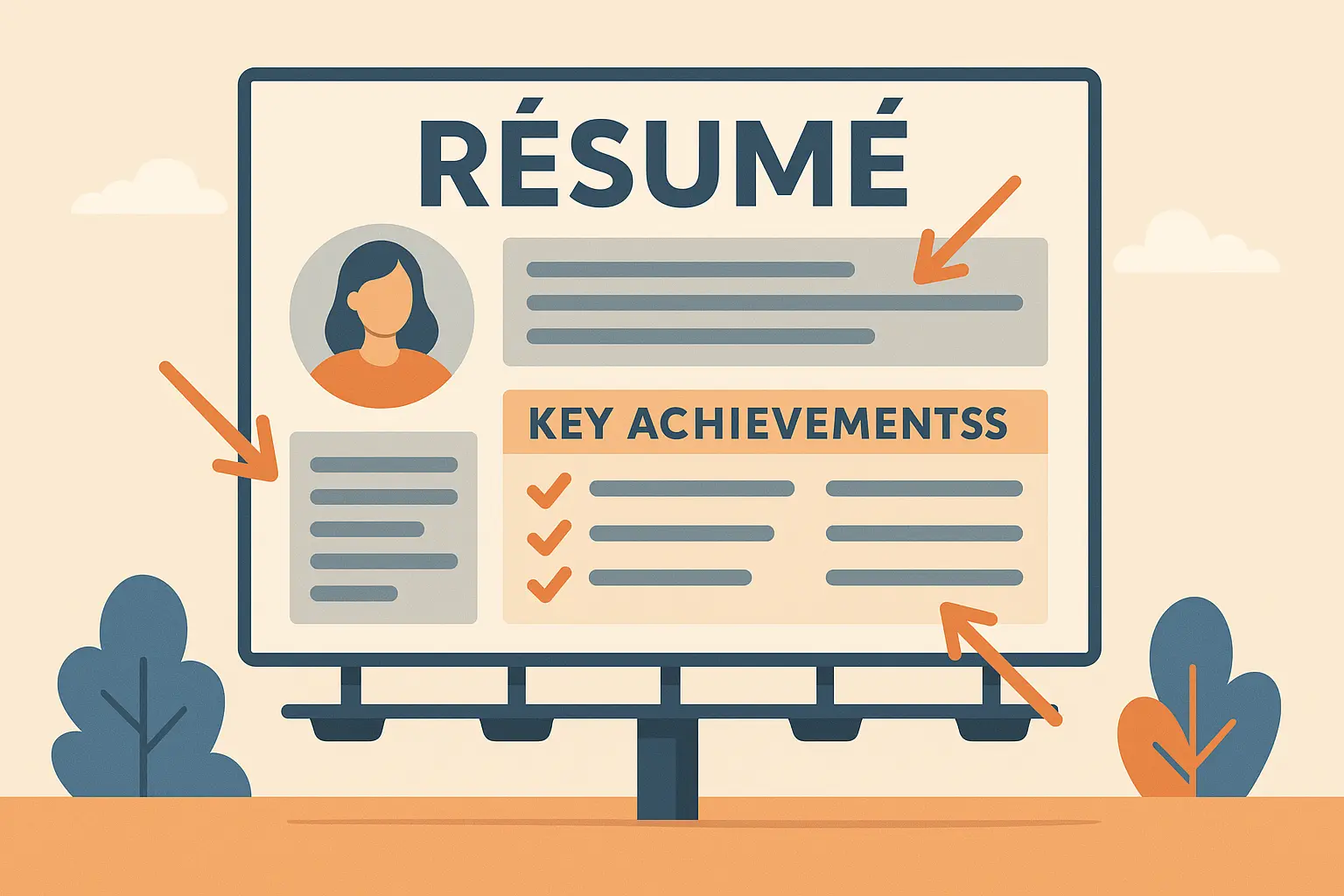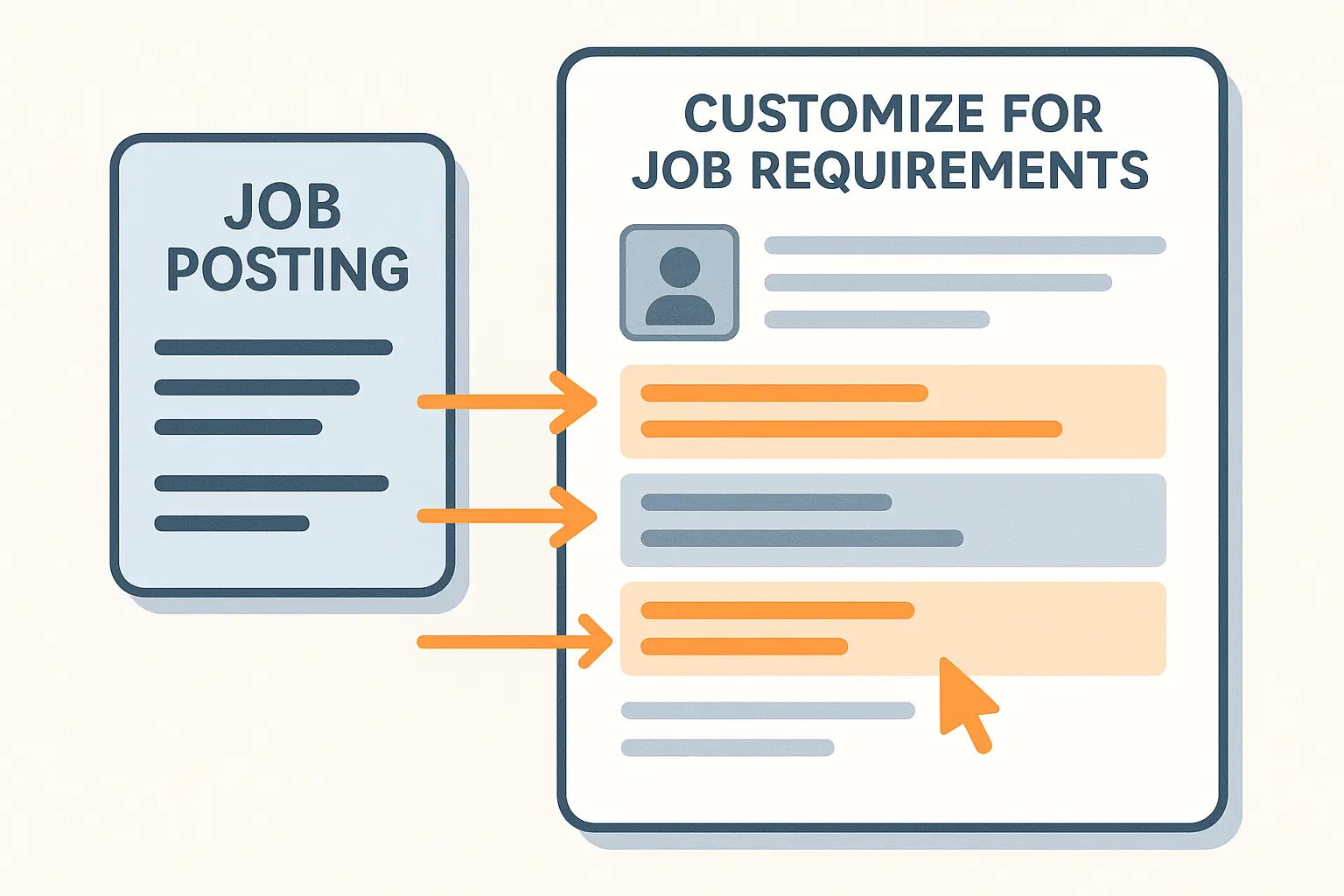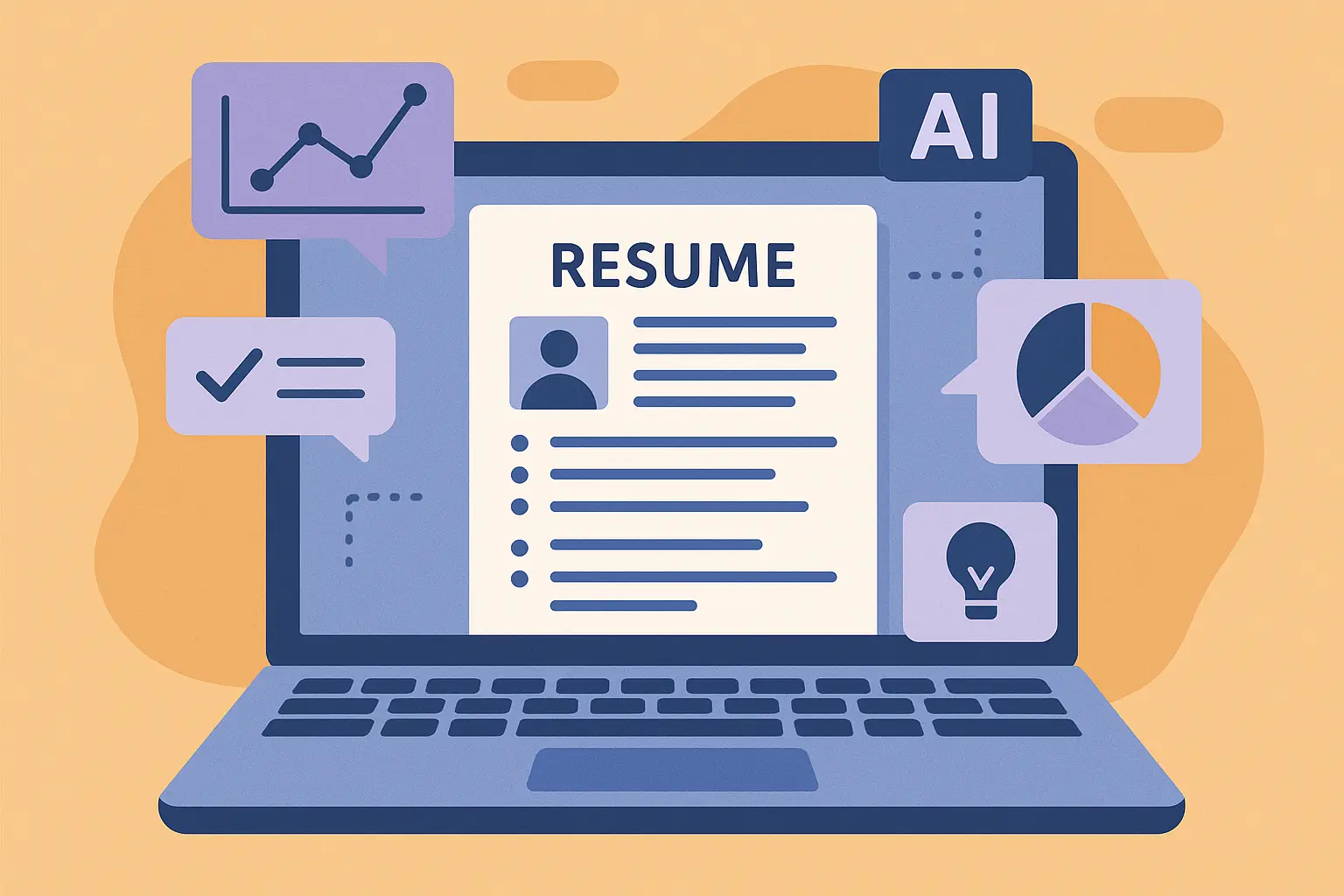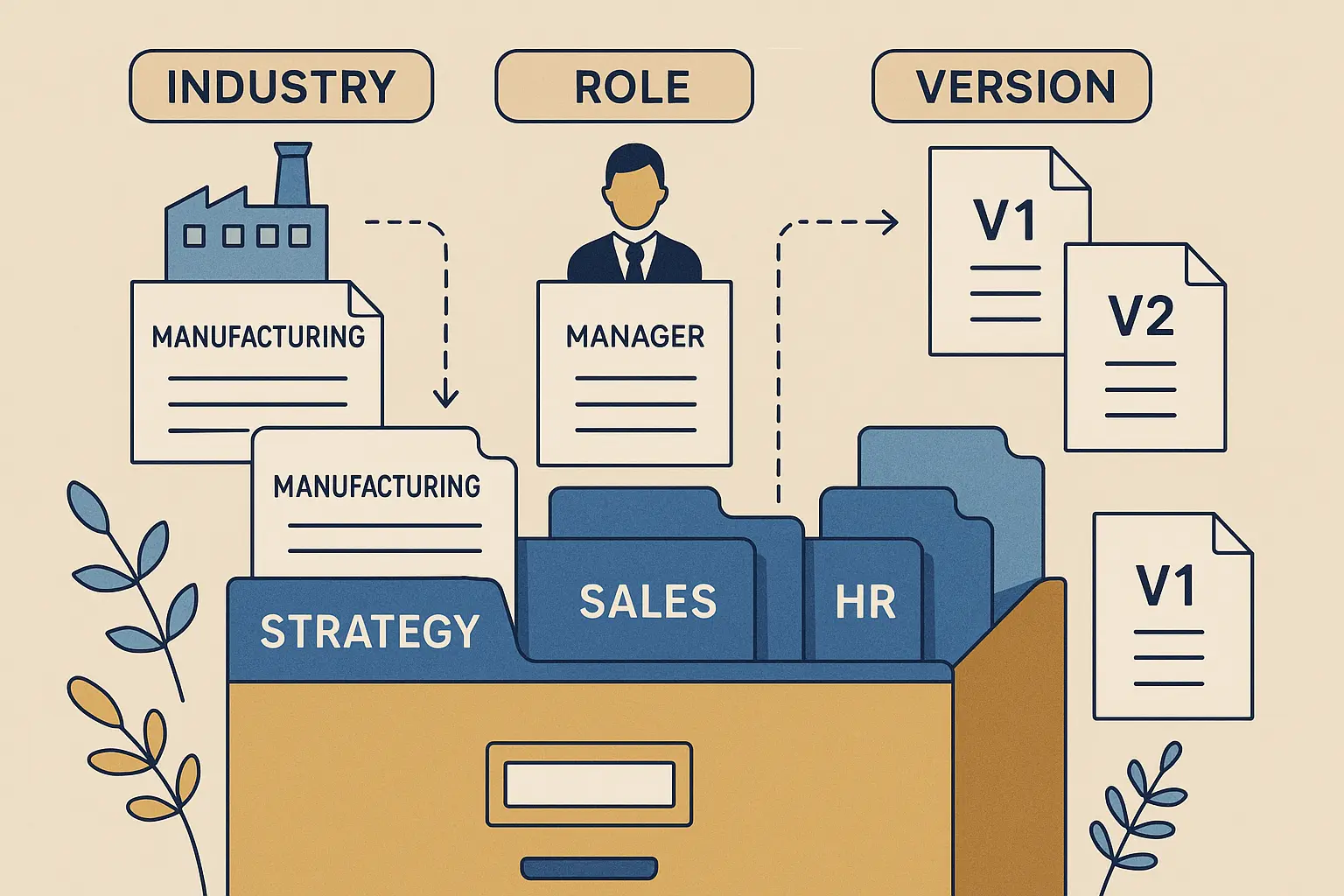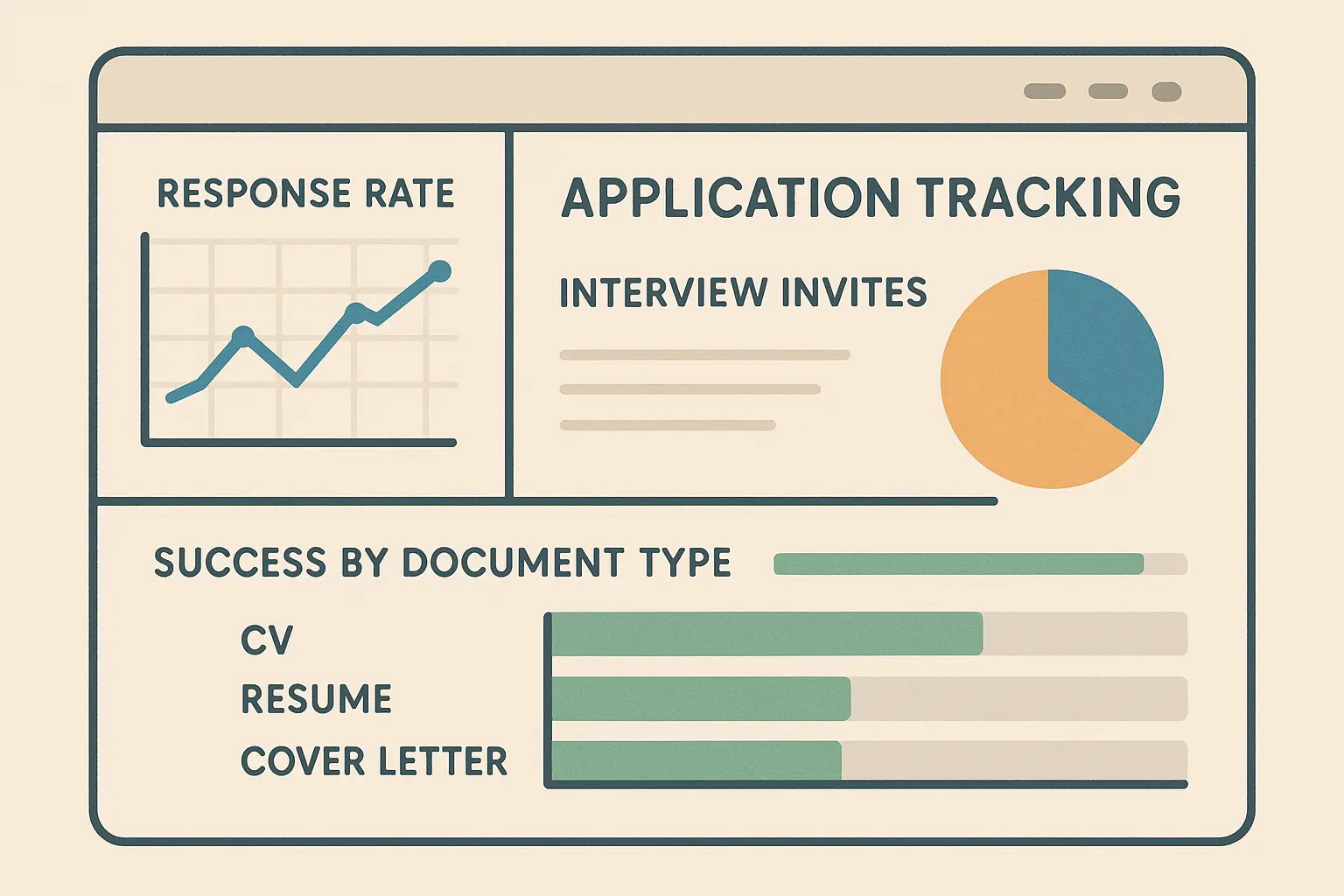CV vs Resume: Why Most Job Seekers Get This Wrong (And How It’s Costing Them Interviews)
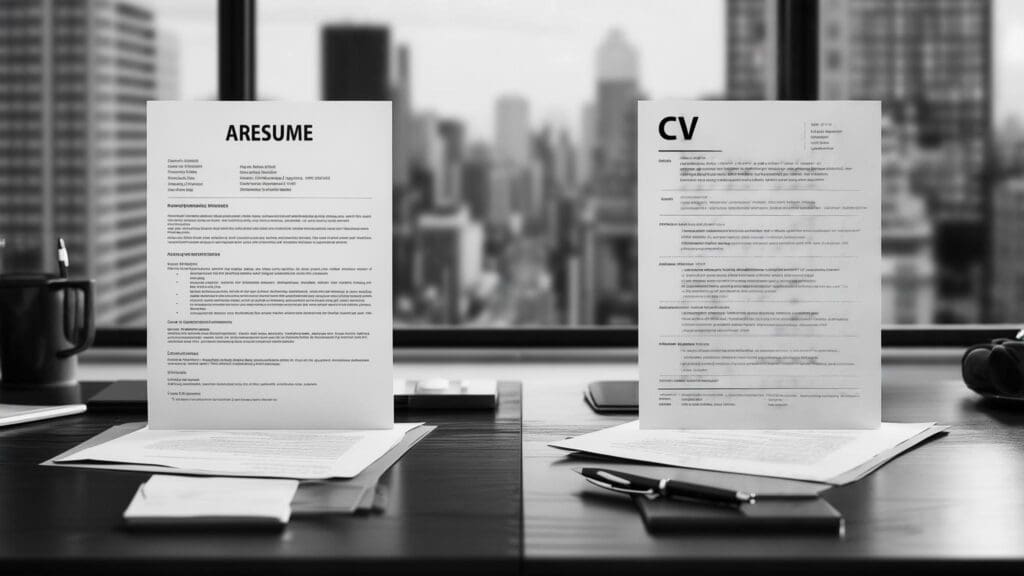
I used to think CVs and resumes were the same thing. Then I watched a brilliant PhD get rejected from a corporate job because she sent a 12-page CV instead of a 2-page resume. That’s when I realized this “small” mix-up is actually costing people their dream jobs. At its core, this is the classic cv vs resume mistake that so many job seekers still make.
Look, this isn’t just splitting hairs over words. Send the wrong type of document and employers think you don’t get how their industry works. With only 48% of resumes including a LinkedIn profile, which can boost interview rates by 71%, most job seekers are already missing critical opportunities before they even consider document type. Let me share what I’ve discovered about when to use each format, how they differ across industries and regions, and most importantly, how to create versions that actually get you noticed by hiring managers.
Table of Contents
- The Real Difference (It’s Not What You Think)
- How to Pick the Right One Every Time
- Modern Tools That Actually Move the Needle
- Your Document Strategy That Gets Results
- Final Thoughts
TL;DR
- CVs tell your complete academic story while resumes are sales pitches for yourself – using the wrong one screams “I don’t understand your industry”
- Where you live matters more than you’d expect – what works in Boston won’t fly in Berlin
- ATS systems read these documents differently, so your formatting choices determine if humans ever see your application
- AI tools can now optimize your content for specific roles, giving you a real edge
- Having master versions of both saves you hours and keeps everything consistent
Here’s the thing: when you submit the wrong document, you’re basically telling employers you don’t understand their world. The stakes are higher than most people realize.
The Real Difference (It’s Not What You Think)
Most people think CVs and resumes are just different names for the same thing, but the cv vs resume distinction runs much deeper than terminology. That misconception has probably cost more job opportunities than any other application mistake. These documents serve completely different purposes, follow distinct rules, and signal different things to employers. Get this foundation wrong and your application dies before anyone evaluates your actual qualifications.
Before diving into professional resume formatting strategies that can make or break your application success, you need to understand these fundamental differences.
When Your Academic Background Actually Matters
CVs shine in academic and research environments where your complete intellectual journey tells the story employers need to hear. These aren’t just longer resumes – they’re comprehensive records that demonstrate your scholarly contributions, research capabilities, and academic progression over time.
What exactly is a CV? It’s a detailed chronicle of your academic and professional life that prioritizes completeness over brevity. Universities want to see your entire scholarly trajectory, from your undergraduate thesis to your most recent conference presentation.
Research Positions Need Your Full Academic Story
Universities, research institutions, and grant committees want to see everything – your publications, conference presentations, research projects, and academic honors. They’re evaluating your potential contributions to their scholarly community, which means leaving out that conference paper from three years ago could actually hurt your chances. This is a key reason why the cv vs resume choice is critical in research-focused careers.
Dr. Sarah Chen’s CV for her postdoctoral application included 15 peer-reviewed publications, 8 conference presentations, and detailed descriptions of her three major research projects spanning 12 pages. When she tried to condense this into a 2-page resume format for the same academic positions, her application success rate dropped from 40% to 12%. The comprehensive format allowed hiring committees to fully evaluate her research trajectory and scholarly impact.
International Academic Markets Have Different Expectations
Academic positions abroad often require specific sections that American job seekers might not consider standard. European universities, for instance, expect detailed information about your thesis work, supervisors, and even your language proficiencies in ways that would seem excessive for US corporate roles.
Length Becomes Your Advantage, Not Your Enemy
While you’d never submit a five-page resume for a marketing role, a comprehensive CV demonstrates the depth of your academic experience. Senior researchers often have CVs spanning 10-15 pages, and that’s expected and respected in academic circles.
According to research from Cultivated Culture’s analysis of 125,000+ resumes, the ideal resume length is 475-600 words, with 77% falling outside this range. However, this guideline applies specifically to corporate resumes, not academic CVs where comprehensive documentation of scholarly achievements is the standard expectation.
Creating Sales Pitches That Actually Sell You
Resumes operate on completely different principles. They’re strategic marketing tools designed to get you interviews, not comprehensive records of everything you’ve ever accomplished.
This fundamental shift in purpose changes how you select content, structure information, and present your value proposition. Every word needs to earn its place by directly supporting your candidacy for the target role.
The strategic approach to resume creation goes hand-in-hand with understanding resume format secrets that help your document stand out in competitive job markets.
Relevance Trumps Completeness Every Single Time
Your resume should ruthlessly prioritize experiences that directly support your target role. That summer internship from college might have been formative for you personally, but if it doesn’t strengthen your case for the position you want, it’s taking up valuable space that could showcase more relevant achievements.
Research shows that candidates only matched 51% of relevant keywords from job descriptions, with only 60% match rate for hard skills and 28% for soft skills. This data emphasizes why strategic content selection focused on role-relevant achievements significantly outperforms comprehensive but unfocused documentation.
Industry Expectations Shape Everything About Your Approach
Tech companies want to see your technical skills prominently featured, while consulting firms care more about your problem-solving achievements and quantifiable business impact. Creative industries might expect portfolio links and design elements that would look completely out of place in conservative financial services applications.
Recent trends show that “hiring managers are particularly interested in your skill set” according to Money Talks News, with emphasis shifting toward both technical abilities and transferable soft skills. This reinforces why understanding industry-specific expectations directly impacts your application success rate.
Regional Differences That Can Make or Break Your Application
Geography plays a bigger role in the cv vs resume decision than most job seekers realize. What’s considered standard practice in one country can signal inexperience or cultural misunderstanding in another, potentially eliminating you from consideration before anyone evaluates your actual qualifications.
North American Hiring Practices Follow Specific Patterns
US and Canadian employers typically expect resumes for most positions, reserving CV requests for academic, medical, or research roles. Using “CV” in your application materials for a corporate position might signal that you don’t understand local hiring practices, even if your content is otherwise strong.
European and Global Markets Operate Differently
Many countries use “CV” as their standard term regardless of document length or format. However, their expectations for content and structure can vary significantly from American-style resumes, requiring research into local preferences and cultural norms for each market you’re targeting.
| Region | Document Type | Expected Length | Key Sections | Cultural Notes |
|---|---|---|---|---|
| United States | Resume | 1-2 pages | Experience, Skills, Education | Quantified achievements preferred |
| Canada | Resume | 1-2 pages | Experience, Education, Skills | Similar to US format |
| United Kingdom | CV | 2-3 pages | Personal Details, Education, Experience | May include photo in some industries |
| Germany | Lebenslauf | 1-2 pages | Personal Info, Education, Experience | Photo and personal details expected |
| Australia | CV/Resume | 2-3 pages | Skills, Experience, Education | Both terms used interchangeably |
| Academic (Global) | CV | 3-15+ pages | Publications, Research, Teaching | Comprehensive scholarly record |
The distinction becomes particularly important when you’re applying internationally or transitioning between academic and corporate environments.
How to Pick the Right One Every Time
Choosing between a CV and resume — the core of the cv vs resume debate — isn’t just about following regional conventions – it requires strategic thinking about your career objectives, target industries, and the specific opportunities you’re pursuing. The wrong choice can immediately signal to employers that you don’t understand their needs or industry standards.
Should you use a CV or resume? The answer depends entirely on your target role and the employer’s expectations, which aren’t always explicitly stated in job postings.
Decoding What Employers Really Want From Job Postings
Job descriptions contain subtle clues about document preferences that go beyond explicitly stating “send your resume” or “submit your CV.” Learning to read between the lines helps you make informed decisions about which document type will resonate best with hiring managers.
Job Posting Language Reveals Hidden Preferences
Phrases like “comprehensive research background” or “extensive publication record” often signal CV expectations, while “proven track record of results” or “demonstrated impact” typically indicate resume preferences. The vocabulary employers use reflects their evaluation criteria and document expectations.
Company Research Uncovers Industry Standards and Cultural Norms
Startup environments typically favor concise, results-focused resumes that demonstrate agility and impact, while established research institutions expect detailed CVs that showcase scholarly contributions.
Understanding company culture helps you align your document choice with their evaluation process and organizational values.
When Marcus applied for a data scientist position at a fintech startup, the job posting emphasized “rapid prototyping,” “measurable business impact,” and “agile development.” These keywords signaled resume preferences, so he created a 2-page document highlighting his 40% improvement in model accuracy and $2M cost savings. For a similar role at a university research lab that mentioned “peer-reviewed publications” and “collaborative research environment,” he submitted a 6-page CV detailing his 12 published papers and conference presentations.
Beating ATS Systems That Screen Your Applications
Both CVs and resumes must navigate Applicant Tracking Systems before reaching human reviewers, but these systems process different document types with varying degrees of success. Understanding ATS requirements ensures your carefully crafted content actually gets seen by the people making hiring decisions.
When comparing different document creation approaches, it’s worth exploring the best resume builders that can help optimize your applications for ATS compatibility while maintaining professional presentation.
Keywords Need Strategic Integration, Not Stuffing
ATS systems scan for relevant terms from job descriptions, but they’re sophisticated enough to recognize keyword stuffing and unnatural language patterns. The key is weaving required terms naturally throughout your content while maintaining readability and professional tone.
Formatting Choices Directly Impact Machine Readability
Complex layouts, unusual fonts, and creative design elements that look impressive to humans can confuse ATS software, causing your application to be rejected before anyone reviews your qualifications.
Clean, standard formatting ensures both document types perform well in automated screening processes.
Data from University of Pittsburgh’s Career Central shows that candidates with 1-page resumes receive double the number of interview invitations, and the optimal length is 475-600 words. However, this applies specifically to resumes, while CVs require comprehensive documentation regardless of length for academic and research positions.
Section Headers and Content Structure Matter More Than You Think
ATS systems rely on recognizable section headers like “Work Experience” and “Education” to categorize your information correctly. Creative headers might showcase your personality, but they can also prevent the system from properly parsing your content and matching it to job requirements.
Recent research published by StudyFinds reveals that “omitting weak grades off your CV may be smarter than disclosing them” after analyzing 12,000 real job applications. This finding challenges traditional advice about complete transparency and suggests strategic omission can improve interview chances, particularly relevant for new graduates deciding what to include in their application documents.
Customization Strategies That Actually Work
Generic documents rarely generate interviews, regardless of whether you’re using a CV or resume format. Successful job seekers develop systematic approaches to customizing their applications while maintaining consistency in their professional brand and core messaging.
Target Role Alignment Requires Strategic Content Selection
Each application should emphasize the experiences and achievements most relevant to that specific opportunity. This doesn’t mean fabricating qualifications, but rather highlighting different aspects of your background that directly support the role’s requirements and responsibilities.
Document Customization Checklist:
- ☐ Identify document type expected (CV for academic/research, resume for industry)
- ☐ Extract 10-15 key terms from job description
- ☐ Highlight relevant experiences that match role requirements
- ☐ Quantify achievements with specific metrics where possible
- ☐ Adjust section order based on what’s most important to employer
- ☐ Include industry-specific keywords naturally throughout content
- ☐ Ensure formatting meets ATS compatibility standards
- ☐ Remove or minimize irrelevant experiences to focus space
- ☐ Add relevant skills section tailored to job requirements
- ☐ Include appropriate contact information and professional profiles
The decision becomes clearer when you systematically analyze each opportunity’s requirements and match your document type to employer expectations.
Modern Tools That Actually Move the Needle
Technology has transformed how we create and optimize job application documents, offering capabilities that were unimaginable just a few years ago. Smart job seekers are using these tools to create more effective CVs and resumes while saving significant time in the application process.
AI-Powered Content Creation Changes Everything
Artificial intelligence tools can now analyze job descriptions, suggest relevant content, and help you articulate your achievements in compelling ways. These aren’t just fancy templates – they’re sophisticated systems that understand industry language and hiring manager preferences.
Content Enhancement Goes Beyond Basic Grammar Checking
Modern AI tools can transform basic job descriptions into compelling achievement statements that demonstrate impact and value. They understand industry-specific language patterns and can suggest improvements that make your experience sound more impressive without exaggerating or misrepresenting your accomplishments.
Real-Time Feedback Improves Your Documents While You Write
Advanced platforms provide instant analysis of keyword density, ATS compatibility, and content strength, allowing you to optimize your documents during the creation process rather than hoping they’ll perform well after submission.
This immediate feedback loop significantly improves your application quality.
Jennifer used an AI resume tool to transform her basic bullet point “Managed social media accounts” into “Increased social media engagement by 150% across 5 platforms, driving 2,300 new leads and $85K in attributed revenue over 8 months.” The AI suggested specific metrics to include and helped her identify quantifiable results she hadn’t initially considered highlighting.
Template Selection Actually Matters for Your Success
Professional templates provide more than just visual appeal – they ensure proper structure, ATS compatibility, and industry-appropriate presentation. However, choosing the right template requires understanding your target industry’s expectations and cultural norms.
Industry-Specific Design Choices Signal Professional Understanding
Conservative industries like banking and law expect clean, traditional layouts that emphasize content over creativity, while marketing and design fields may appreciate more visual elements that demonstrate your aesthetic sensibilities.
Your template choice communicates your understanding of industry culture before anyone reads your content.
For professionals in finance sectors, understanding banking interview preparation alongside proper document formatting creates a comprehensive application strategy.
Multi-Platform Compatibility Ensures Consistent Presentation
Your documents need to look professional whether viewed on mobile devices, desktop computers, or printed copies. Modern templates account for these different viewing contexts, ensuring your formatting remains intact regardless of how hiring managers access your application.
| Document Type | Industry | Template Style | Key Features | ATS Compatibility |
|---|---|---|---|---|
| Resume | Technology | Modern, Clean | Skills section prominent, GitHub links | High |
| Resume | Finance | Traditional, Conservative | Education first, quantified results | High |
| Resume | Creative | Visual, Branded | Portfolio links, design elements | Medium |
| CV | Academic | Formal, Structured | Publications section, research focus | High |
| CV | Medical | Professional, Detailed | Certifications, clinical experience | High |
| Resume | Sales | Results-focused | Achievement bullets, metrics heavy | High |
The template selection process becomes critical when you consider that different industries have vastly different visual expectations and professional standards.
Your Document Strategy That Gets Results
Creating effective CVs and resumes requires more than just understanding the differences between them – you need smart ways to build, maintain, and deploy these documents so you’re always prepared for different opportunities while maintaining professional consistency.
Document Creation Systems That Save Time and Improve Quality
Successful job seekers develop efficient workflows for creating and maintaining multiple document versions, ensuring they can quickly customize applications for specific opportunities without starting from scratch each time.
Master Document Development Provides Your Foundation
Creating comprehensive master versions of both CV and resume formats gives you a complete inventory of your experiences, achievements, and qualifications that you can draw from when customizing for specific opportunities. This approach ensures consistency while enabling targeted customization.
Version Control Prevents Confusion and Mistakes
Managing multiple document versions requires systematic organization to prevent sending outdated information or mixing up customizations for different roles. Simple naming conventions and folder structures can save you from embarrassing mistakes that could cost you opportunities.
Quality Assurance Processes Maintain Professional Standards
Establishing review procedures for grammar, formatting, and content accuracy ensures every application meets professional standards. This includes checking for consistency in dates, formatting, and contact information across all your application materials.
Document Version Control Template:
Master_CV_[YourName]_2024.pdf
Master_Resume_[YourName]_2024.pdf
Resume_[YourName]_[Company]_[Role]_[Date].pdf
CV_[YourName]_[Institution]_[Position]_[Date].pdf
Performance Tracking Reveals What Actually Works
Monitoring your application success rates provides valuable insights into which document formats, content approaches, and customization strategies generate the best results for your target roles and industries.
Application Response Metrics Guide Your Strategy
Tracking response rates and interview invitations helps you identify patterns in what works for different types of positions and employers. This data-driven approach allows you to refine your documents based on actual results rather than assumptions about what hiring managers want.
Resume Builder IQ addresses these challenges with AI-powered precision that adapts to your specific needs. Whether you’re crafting a targeted resume for corporate roles or a comprehensive CV for academic positions, the platform’s ATS-friendly templates and industry-specific formatting ensure optimal performance. With users seeing 38% more interview opportunities, you can create multiple document versions while maintaining professional consistency across all applications.
Final Thoughts
Bottom line: Get this right and you’ll get more interviews. Get it wrong and you’re invisible. It’s really that simple.
I know how frustrating it is when you’re qualified but not getting calls back. You’re probably thinking this is way more complicated than it should be. If you’re feeling overwhelmed, you’re not alone – I see this confusion every day.
Here’s what matters most: Both document types serve specific purposes and audiences. Your success depends on matching the right format to the right opportunity while ensuring your content resonates with both ATS systems and human reviewers. Whether you’re pursuing academic positions that require comprehensive CVs or corporate roles that demand concise resumes, the principles of strategic customization and professional presentation remain constant.
Your application documents are often the first impression you make on potential employers. Taking the time to understand these distinctions and implement the strategies we’ve discussed can significantly improve your interview rates and career opportunities. The investment in creating properly optimized documents pays dividends throughout your entire job search process.
When it comes to cv vs resume, pick the format that matches what they expect, customize it for each job, and watch your response rate climb.


